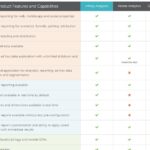The LunaMetrics blog has a great writeup about the web analytics data layer aimed at non-techies. Actually, it’s perfect for techies as well. The vibe that I’m picking up so far is that many folks aren’t using a data layer in their web analytics implementations just yet. But once you master the data layer concept, it opens many new capabilities in web analytics data capture, especially when using a tag management tool.
I initially read about the data layer with regards to Google Tag Manager, and it seemed odd to me that more advanced web analytics tools such as Adobe Analytics and Webtrends weren’t using this method to facilitate data collection. Turns out that some SiteCatalyst implementations had already used this technique, but few people had written publicly about it. (Why?) Recently I used a data layer on my first Adobe Tag Manager implementation and I found it was the best decision I’d ever made since I learned how to configure a hybrid Webtrends data collection setup back in 2006.
So, the idea behind the data layer is that on the server-side the web developer will expose some data elements in a JSON-formatted block of JavaScript and then your tag management container will be able to pick up those data elements and propagate the data throughout the other tags in the container. Determining which data elements requires some forethought. In many cases, we’re referring to passing along ecommerce-related data elements here, such as tracking data, order totals, transaction numbers, product prices, tax, etc. Many other data elements can be picked up with existing web analytics data capture techniques.
So, take a look at the two links above, and feel free to leave a comment below and share your thoughts and questions. As for me, my next mini-project is to implement Google Tag Manager with a data layer on a VPASP ecommerce site. I will pass along my experience with this project in future posts.
